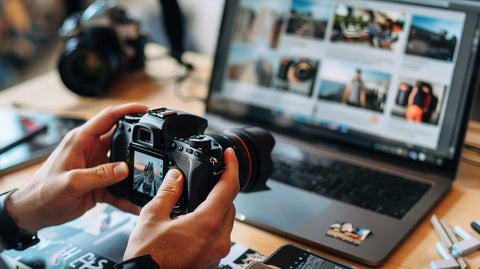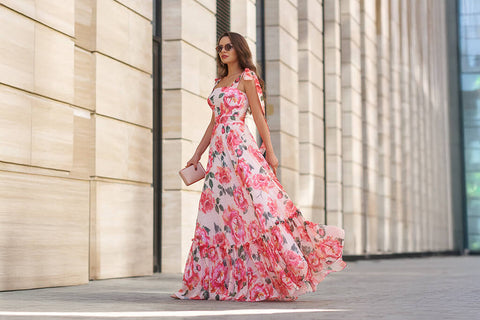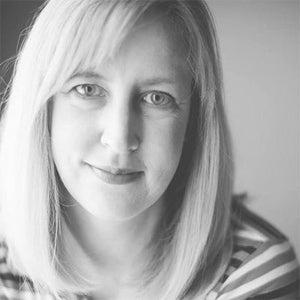- Lightroom Presets
- Mobile Presets
-
Photoshop
-
Learn
-
Support
-
Install
- Best Sellers
- Blog
By Gayle Vehar on | No Comments

Learning how to make the colors in your photo "pop" is one of the most basic and important things to know how to do in Lightroom!
Before we get started, it's important to know that the best way to make colors pop in a PORTRAIT image is different than making colors pop in a LANDSCAPE image and MOST OTHER TYPES of images. With a PORTRAIT image, you will generally want to pop colors "selectively" in order to avoid turning your portrait subject's skin tone orange, yellow, or red.
Color pop is a relatively simple process - one you can do yourself with individual tweaks. And there are severaly ways to do this in Lightroom, all of which I will cover below. Keep in mind, you can combine any of these techniques or use them on their own depending on the amount of color you wish to add.
Of course if you want to save a lot of time, you use a good color pop preset instead (I will share some of my favorites below).
In general, just make sure you don't over-do your color pop, which is quite easy to do.
Here is my unedited image. I love the composition, but it has a bit of haze and is quite dull. I also captured this image in the RAW photo format which tends to have less overall contrast. With the help of post processing in Lightroom, I am going to bring it to life!

The Lightroom Tone Sliders may seem like an odd place to start enhancing colors. However, adjusting a few tone sliders in the the Basic Panel can quickly bring out some of the beautiful color and contrast in your image. Here are the important sliders to use:

Next, you will want to use the Presence Sliders, also found in the Basic Panel. These sliders are specifically designed to help increase the amount of color in your image. Here are the important sliders to use:

Another great way to add color pop to a portrait image is to apply a medium contrast curve in the Lightroom Tone Curve panel.
Start by opening the Tone Curve panel. Once the panel opens, you will see several circles at the top. Click on the WHITE circle. This will open the "Point Curve" options. At the bottom of the panel, click on the words next to Point Curve and then choose "Medium Contrast". You will notice an immediate change in contrast to your image.
If you want an even stronger effect, go ahead and try the "Strong Contrast" option.


The HSL/Color Panel was created specifically to allow you to control color in your photo. Whether you use it to saturate a color, increase the brightness or darkness of a color (luminance adjustment) or even change the color hue (hue adjustment), this panel will be your best friend.
Open the HSL/Color panel, At the top of the panel you will see the words "Hue", "Saturation", "Luminance", and "All". For this image, I will focus on the "Saturation" and "Luminance" sections.
In the Saturation section, I increased (moved to the right) the Purple and Magenta sliders to boost the pinks and purples in my image and then to balance out the skin tones, I decreased (moved slightly to the left) the Orange slider just a bit.
If you aren't sure exactly which sliders to move, you can always use the Targeted Adjustment Tool (highlighted below). Click on the Targeted Adjustment Tool and then click and drag upward on an area of your image where you want to INCREASE THE SATURATION. Keep in mind, you can also click and drag downward on any area of your image where you want to DECREASE THE SATURATION!

Once I completed my Saturation adjustments, I moved to the Luminance section where I slightly increased (moved to the right) the Red and Orange sliders which brightened the colors of the skin tones.
Just as I previously described above, you can also use the Targeted Adjustment Tool with your Luminance adjustments in the same way.

Here is a before/after comparison using my sample photo using ONLY the adjustments described above.

Lightroom Presets are a FAST and EASY way to add color pop and contrast to your image. If the preset is well-designed, it can add all the slider adjustments you would need to add color, contrast and style to your image in a few simple clicks.
Pretty Presets has some of the best Color Pop presets available. They are designed to help us edit faster so we can spend less time on our computer and more time behind our camera, which I truly appreciate!
Many preset collections at Pretty Presets include some variation of a color pop preset, but here are a few of my favorites:

Using a mask is another great way to "selectively" add color pop to your image in Lightroom. Lightroom masks allow you to make changes to specific areas of your photo using several different masking tools.
To activate the mask tools, click the circle with a dotted outline icon in the tool bar (located between the Histogram and the Basic Panel).

When the options open, click on Brush which will allow you to brush on any type of adjustment you wish. You can load the brush settings with increased saturation, clarity and contrast (or any combination you wish) and then brush them over the areas of your image where you wish to increase the color pop.

Remember what I said at the start of this tutorial, about not overdoing it?
Intensifying colors is great - TO A POINT. But if you go too far, your image will scream "Photoshop!" and it may NOT be well received by your viewers (friends, family, clients, etc). If you think you may have gone too far, you probably have.
Remember, you can combine these techniques or use them on their own depending on the amount of color you wish to add. Either way, just make sure to add your color adjustments slowly. It takes a careful hand to get the color in your photo just right.
Do you have any questions or comments about Color Pop in Lightroom? Just leave us a comment below - we would LOVE to hear from you! And PLEASE SHARE this post using the social sharing buttons (we really appreciate it)!




Hi!! I am Gayle. I am a wife to my handsome husband and mom to 4 beautiful kids. In my spare time, I am a photographer and blogger at Mom and Camera. I have a passion for sharing my love of photography with others. I teach local photography classes and regularly share photography tips and tricks on my blog. I hang out there a lot—I’d love you to stop by and visit!

Comments